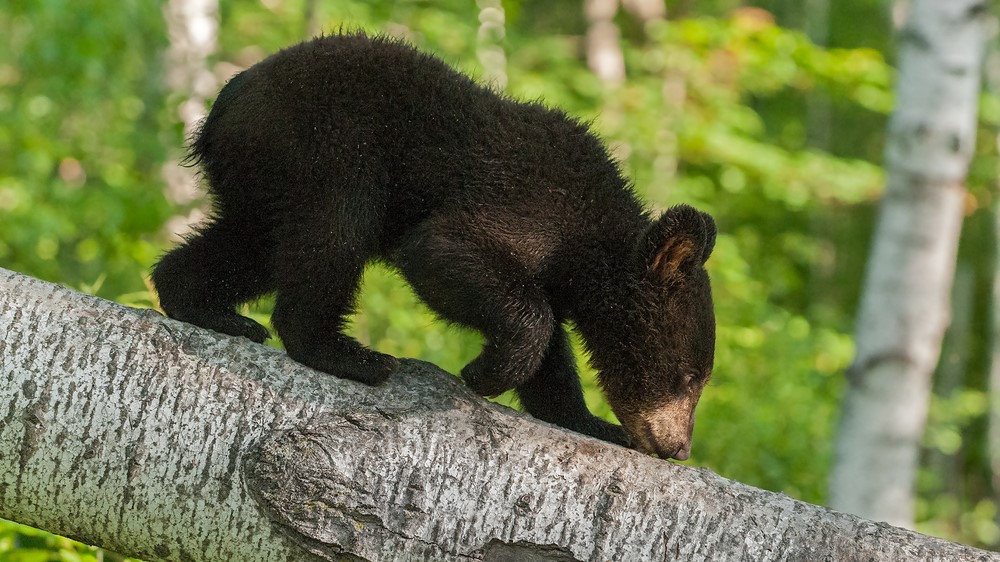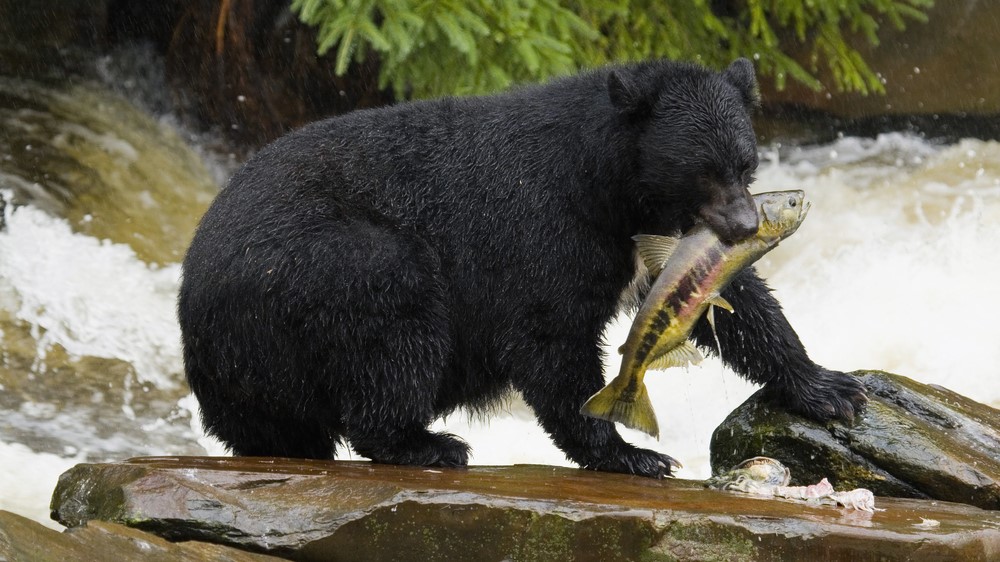Mysterious brain infection makes bears act 'like friendly dogs'
Infected bears are less scared of people and are struggling to survive on their own.

A mysterious neurological disease in young Californian black bears (Ursus americanus) is making them behave like pet dogs, cozying up to humans in a friendly manner.
Though it sounds cute, this abnormal behavior dramatically worsens the bears' chances of surviving in the wild.
The bears, which are all around 1 year old, appear to be suffering from a form of infectious encephalitis — inflammation of the brain tissue that can be caused by viruses, bacteria, fungi and parasites, as well as part of an autoimmune response. But veterinarians are unsure exactly what is causing the problem or how fast it is spreading among the population.
Symptoms include a prominent head tilt, lethargic movements, muscle tremors, seizures, walking in circles and being significantly underweight, as well as a surprising fearlessness towards humans.
Related: The 10 weirdest medical cases in the animal kingdom
"Infected bears come to our attention because they approach people in a peaceful, friendly and non-aggressive manner," said Ann Bryant, executive director of the BEAR (Bear Education Aversion Response) League who has been involved in rescuing infected bears. "Their behavior is similar to a dog, not a bear."
In the last year, four individuals have been found with the disease — the highest number of cases since it was first detected in 2014, according to the California Department of Fish and Wildlife (CDFW).
Sign up for the Live Science daily newsletter now
Get the world’s most fascinating discoveries delivered straight to your inbox.
The black bear population in California has increased from between 10,000 to 15,000 individuals in 1982 to between 30,000 to 40,000 today, according to the CDFW. As a result, veterinarians aren't too worried about the impacts of the disease on the overall population.
Fearless youngsters
Although cases of encephalitis are rare, the symptoms have made it quite easy to spot infected bears.
"The first bear I personally rescued was diagnosed with encephalitis in March of 2018," Bryant told Live Science. "She walked into a school and entered a classroom where she sat down among the children, behaving very much like a friendly dog."
In 2019, another infected bear was caught on video trying to climb onto a snowboard alongside its rider. The young male was eventually rescued after the snowboarder and his friends played with him and fed him sandwiches. However, friendly behavior doesn't mean it's safe for humans to be around the bears.
"Bears approaching people who might then treat the animal as if they are tame could easily present a danger," Bryant said. "I would not be comfortable with a member of the public trying to handle one of these, or any, bears."
Instead, if anyone comes across bears displaying symptoms of encephalitis they should report it to the CDFW, Bryant said.
These two particular bears now reside in rescue centers, where they must receive constant medical care to keep the brain inflammation under control, but most other bears aren't so lucky.
The most recent bear found to have the disease, which was discovered in February lying in the back of a truck parked on a residential property, was majorly underweight and covered in fleas, and had to be put down because of its poor physical condition, according to the Sacramento Bee.
Unfortunately, this sad fate has befallen the majority of infected bears, who are not able to take care of themselves and appear to have been abandoned by their mothers.

On the increase?
Veterinarians with the Nevada Department of Wildlife (NDOW) first discovered the encephalitis in bears around Lake Tahoe on the Californian border in 2014, according to the CDFW.
Since then the CDFW has recorded eight cases in California, although the actual number may be higher. Half of the confirmed cases have been detected in the last year, but this doesn't necessarily mean it is on the increase.
"My opinion is that this is not on the increase," Bryant said. "But more studies are now finally being done so we are more aware of it."
The disease also doesn't appear to be transmissible between individual bears, Bryant said. This is encouraging for the rest of the population but has left researchers confused as to what is causing it.
"The worst part about this threat to our bears is that we don't know for sure what causes it," Bryant said. "The unknown is troubling."
Unknown origin
Infected bears are taken to the CDFW's Wildlife Investigations Laboratory, where they can either be treated or, more likely, euthanized due to their poor physical condition.
"Bears that die or are euthanized are necropsied to determine the cause of death," Brandon Munk, senior wildlife veterinarian at the CDFW's Wildlife Investigations Laboratory, told Live Science. "Evaluation of the tissues can confirm whether an animal had encephalitis or not."
Although the vets can identify the disease, determining the cause of the encephalitis has proved much harder.
"The brain inflammation is likely what causes the symptoms," Munk said. "Beyond that, we do not know the specific mechanisms that may be at play."
Potential pathogens have been identified as the cause of the encephalitis, but none have been confirmed so far.
"We have identified five new viruses from black bears, some of which are being pursued further as possible causes of the encephalitis," Munk said. "We are also working with a research lab to further evaluate whether a protozoan parasite might be the cause."
However, it is also possible that there is more than one pathogen responsible for the encephalitis, Munk said.
Originally published on Live Science.

Harry is a U.K.-based senior staff writer at Live Science. He studied marine biology at the University of Exeter before training to become a journalist. He covers a wide range of topics including space exploration, planetary science, space weather, climate change, animal behavior and paleontology. His recent work on the solar maximum won "best space submission" at the 2024 Aerospace Media Awards and was shortlisted in the "top scoop" category at the NCTJ Awards for Excellence in 2023. He also writes Live Science's weekly Earth from space series.









